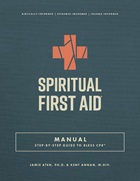Witness of the Church in a Global Pandemic: Let Your Light Shine

The mounting numbers are difficult to absorb: we are 7 months into a global pandemic, and at least 15 million people have been infected and more than 600,000 have died.
Yet tragedy at this scale is not new. Our world has faced epidemics and catastrophes before, with tremendous grief and loss. Today, we hope modern science will soon provide tools to combat this disease and alleviate suffering. But, as we wait and hope, we recognize that millions of people continue to suffer and grieve, and that the church is called to care for their needs.
When Jesus walked the earth, he encouraged his followers to care for those who are sick. Throughout his ministry, Jesus set an example in both word and deed. And in the parable of the sheep and the goats (Matt. 25), Christ declares that caring for the sick—and especially for the least among us—distinguishes those who are faithful in following God’s concern for the marginalized from those who are not.
The early Christian church took this call and command very seriously. During the biggest plagues and illnesses of recorded history, Christians distinguished themselves by heeding Christ’s call to care for the sick. Over time, this visible witness to God’s love and compassion for humanity has impacted both the depth and numeric growth of the church.
Secular leaders in those times have also taken note of this witness. Historic accounts record how Christians became “salt and light” within their communities, sacrificing their wellbeing and health (even their own lives!) to care for the needs of others, including those not related to or even known to them. In some cases, the church’s actions stood in stark contrast to the actions of other leaders.
This incredible witness of love and grace to humanity in the midst of fearful and unknown diseases helped the church gain stature and respect throughout society. Thus, ever since Christ’s admonition to care for the sick, Christians have been known for their leadership in providing healthcare services to communities, including the establishment and management of hospitals as we know them today. This is our history and our witness, and something we are called to do.
“Called to Be Salt & Light”
Early on in the pandemic, a group of us gathered to discuss a simple question: Would the church reprise this role in the current pandemic?
We wondered what churches and Christian leaders in the US were saying and doing in response to the emerging COVID-19 pandemic. We knew many faith-led hospitals were caring for the increasing number of sick in helpful and holistic ways. We also knew that the three top healthcare scientists leading our country, Drs. Fauci, Birx, and Collins, relied on their Christian faith to guide them in their jobs of caring for our nation. But what would denominations and Christian leaders more broadly say and do at this critical juncture?
We hoped to find the body of Christ reflecting God’s call to care for the sick and to protect the vulnerable. We wanted to see if, across the breadth of denominations and top leaders, there were calls to pray, calls for Christians to follow public health guidelines (wear a mask, social distance, wash hands), and calls to support those suffering the most, both locally and around the world, as the pandemic disproportionately hurt the poorest and most marginalized communities. And so, we began gathering data.
We looked at the homepages of 19 major Christian denominations as well as the Twitter feeds of 120 Christian leaders in various sectors of society—pastors, authors, artists, and nonprofits and their leaders—to see what they were saying about the crisis. We looked weekly at what was publicly posted on websites or on Twitter regarding the coronavirus. We looked to see how Christian voices were calling followers toward actions that included prayer, serving, and giving to the needs of others, including giving beyond the borders of the U.S.
Our findings and our data are now public on a website called the Salt and Light Project.
What We’re Learning
Overall, denominational websites have focused more on how to DO church than on how to BE church to their communities. These sites have emphasized an inward focus on resourcing local congregations with information—on practices such as how to stream worship, shift to online giving, or reopen safely. There are a few stellar examples of denominations with an outward focus, encouraging their members toward public service and giving to those most in need. The Salvation Army is one such example that is highlighted on the website, but they were more the exception than the rule.
We wonder if this silence regarding service represents an opportunity lost, an opportunity to participate in the outward-facing mission of the church and in doing so to follow in the footsteps of our spiritual forebears? Institutional maintenance is of course important and necessary. But much of the world is taking note of our actions and reactions, and it is imperative that we not squander this moment to bear witness to Christ’s love for the world.
Christian authors, artists, journalists, nonprofits and their leaders responded in ways we might expect. Artists and authors promoted their products and brands and rarely commented about the pandemic. On the other hand, most media and nonprofit organizations engaged the topic (some were news outlets and others, humanitarian organizations). But the pastors surprised us. Only 20 to 40 percent of pastors commented on the pandemic during any week while the pandemic raged. Several good reasons could account for this, but we were left wondering why more clerical voices weren’t raised to equip parishioners to respond.
Of course, any measure is imperfect. Our research represents a sampling and doesn't capture the complete story. Many local churches are responding to the pandemic in amazing ways not featured in our data. The church in other countries, often in areas with significantly fewer resources, is responding to needs within their communities in wonderful and hopeful ways. We recognize and honor these acts of love.
We believe the church is both called and equipped to respond to crises in our communities. We have seen inspiring examples of denominations and Christian leaders calling attention to Christ’s commands and spurring us all on to good deeds and a clear witness. Now we hope to see others follow suit.
Follow the work of Dr. Gailey and his team on the Salt and Light Project website, here.
This post originally appeared at reopeningthechurch.com.
Rob Gailey, Ph.D., joined the Fermanian School of Business at Point Loma Nazarene University in 2005 and currently serves as Professor of Business and the Director for the Center for International Development. Rob has served as an associate pastor, missionary, nonprofit leader, and educator around the areas of economic development, cross-cultural advocacy, and poverty alleviation. Rob and co-authors from Abilene Christian University are working on a book to be published in 2021 that will serve as a resource to churches in the global north that want to be more effective in their cross-cultural ministries. Rob is married to Wanda, and together they have two teenage children.
The Better Samaritan is a part of CT's
Blog Forum. Support the work of CT.
Subscribe and get one year free.
The views of the blogger do not necessarily reflect those of Christianity Today.






















